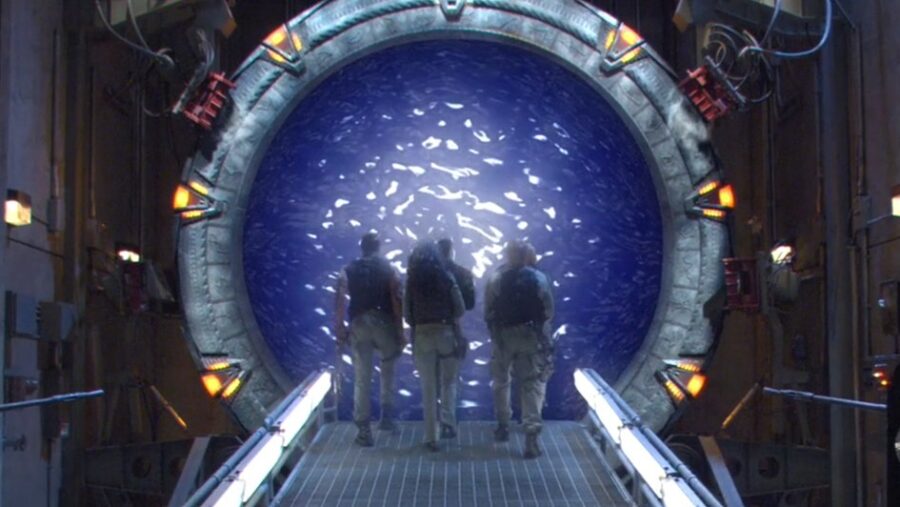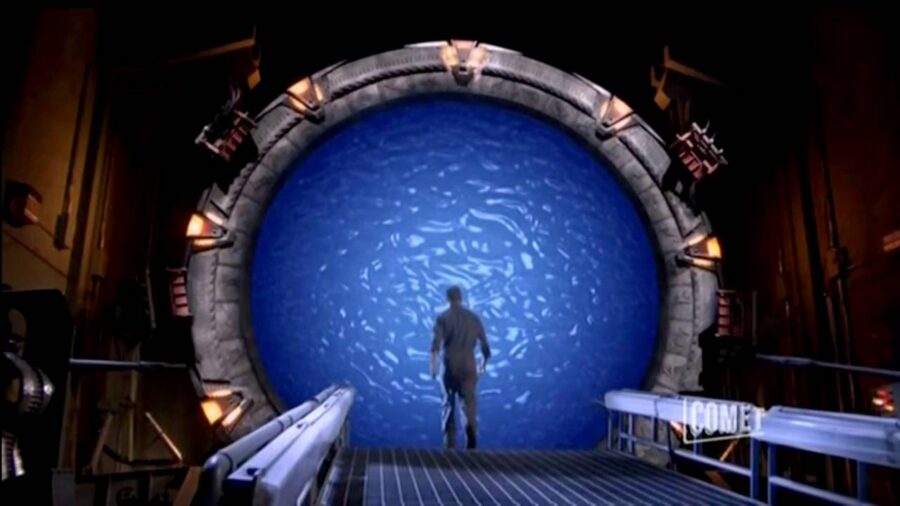How A Stargate Actually Works
Here's the mythology behind the stargates, along with the real science.

In 1994, Roland Emmerich hit audiences with a new sci-fi obsession when he unleashed the film Stargate onto the masses. An immediate hit, the movie spawned an entire franchise including books, video games, and comics as well as the beloved television series. While we may know about the story of the cosmic travelers jumping through one portal to the next, how exactly do the Stargates aka Astria Porta’s work?
First constructed by the Ancients, the wormhole-like designs known as Stargates give those using them the power to time-hop between two spread-out points across the never-ending depths of space. While they were formed by the Ancients, the portals have also been crafted by the Asurans, the Tollan, and the Ori who have each used the devices for their own purposes.

At the center of the Stargate’s build is a vortex of energy that’s powerful enough to send someone or something through a wormhole, giving the user the ability to swiftly travel from one point to another. As audiences will know, the power of the energy from some machines like Earth’s Stargate forces the traveler to be dematerialized to travel at such high speeds only to be put back together on the other side.
As long as energy is passing through it, the Stargate will remain open for business for up to 38 minutes with less energy needed to hold it open than to send someone through.
The science behind moving through a Stargate is a tricky one as you can go one way but can’t come back that same way. Should a traveler attempt to do the reverse, the energy wouldn’t be able to handle the change and would prove to be a disastrous and deadly move.
As for the science behind the portals themselves, Stargates have a specific number of glyphs formed around their inner ring for gate destinations in the Milky Way, Pegasus, and Destiny. Accompanying those glyphs are chevrons which are spaced out around the portal’s outer edge.
The glyphs and chevrons essentially make up the mapping system for the Stargates, allowing those stepping through the portal to dial in their coordinates to their desired landing point.

When it comes to travel between the Stargates, it’s broken down into a three-step process which includes stages such as dematerialization, transmission, and reintegration. First, the thing passing through the wormhole breaks down into what’s called a “hyperspatial buffer” with only one object at a time being able to be moved through the portal.
Next, the object is shot in the form of energy to its landing point. This step is a tricky one as if something happens to the power supply, the entire wormhole can be torn apart, creating a life-threatening situation.
Finally, the event horizon at the arrival Stargate brings the object back to materialized matter with a stabilization process used to ensure that everything is as it should be. From there, it’s smooth sailing for the person who has reached their final destination.
While each sci-fi universe from Star Wars to Star Trek and even the Back to the Future franchise has its own way of handling time-hopping, Stargate is all about the physics and energy behind wormhole exploration.












